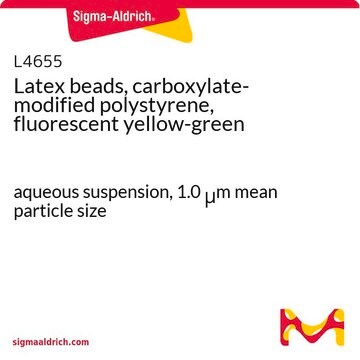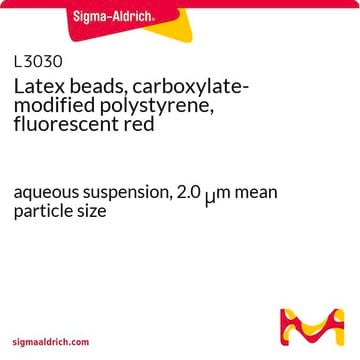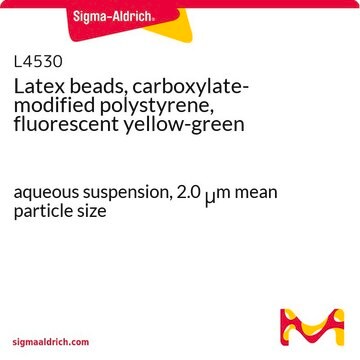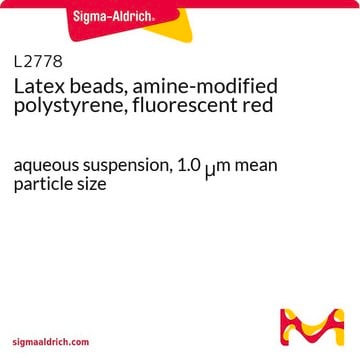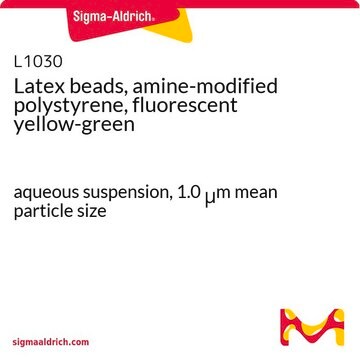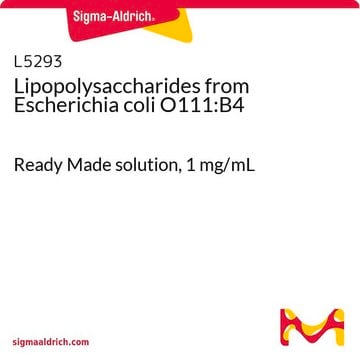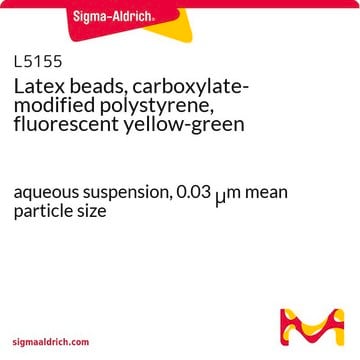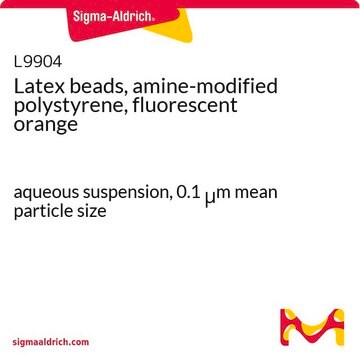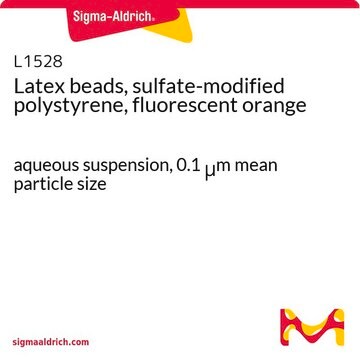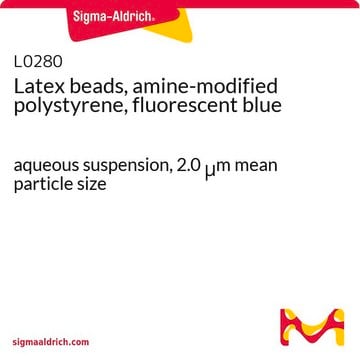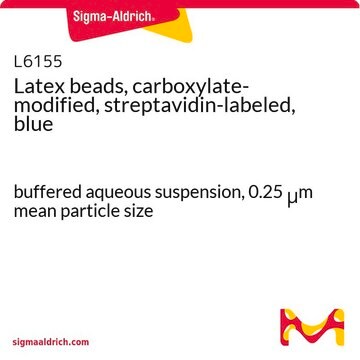Unfortunately, the bead count for this product has not been determined. The particle size is approximately 0.5 um and the solid content is approximately 2.5%. Please see the link below to review the full product specifications:
https://www.sigmaaldrich.com/specification-sheets/357/795/L3280-BULK________SIGMA____.pdf
L3280
Latex beads, carboxylate-modified polystyrene, fluorescent red
aqueous suspension, 0.5 μm mean particle size
Synonim(y):
Fluorescencyjne kulki lateksowe, Karboksylanowe kulki polistyrenowe
Wybierz wielkość
567,00 zł
Wybierz wielkość
About This Item
567,00 zł
Polecane produkty
Formularz
aqueous suspension
skład
Solids, 2.5%
metody
cell based assay: suitable
średnia wielkość cząstek
0.5 μm
fluorescencja
λex ~575 nm; λem ~610 nm
Zastosowanie
cell analysis
Szukasz podobnych produktów? Odwiedź Przewodnik dotyczący porównywania produktów
Zastosowanie
Kod klasy składowania
10 - Combustible liquids
Klasa zagrożenia wodnego (WGK)
WGK 3
Temperatura zapłonu (°F)
Not applicable
Temperatura zapłonu (°C)
Not applicable
Środki ochrony indywidualnej
Eyeshields, Gloves
Wybierz jedną z najnowszych wersji:
Masz już ten produkt?
Dokumenty związane z niedawno zakupionymi produktami zostały zamieszczone w Bibliotece dokumentów.
Klienci oglądali również te produkty
-
How many latex beads (500 nm) are present in 1 mL solution?
1 answer-
Helpful?
-
-
How many fluorescent beads (L3280) are in the 1 ml of the product?
1 answer-
The bead count for this product is not a tested specification. As listed in the "Properties" section of the product detail page, the solids constitute 2.5% of the aqueous solution. This specification can also be viewed on the sample Certificate of Analysis: https://www.sigmaaldrich.com/certificates/sapfs/PROD/sap/certificate_pdfs/COFA/Q14/L3280-BULKMKCS6365.pdf.
Helpful?
-
Active Filters
Nasz zespół naukowców ma doświadczenie we wszystkich obszarach badań, w tym w naukach przyrodniczych, materiałoznawstwie, syntezie chemicznej, chromatografii, analityce i wielu innych dziedzinach.
Skontaktuj się z zespołem ds. pomocy technicznej